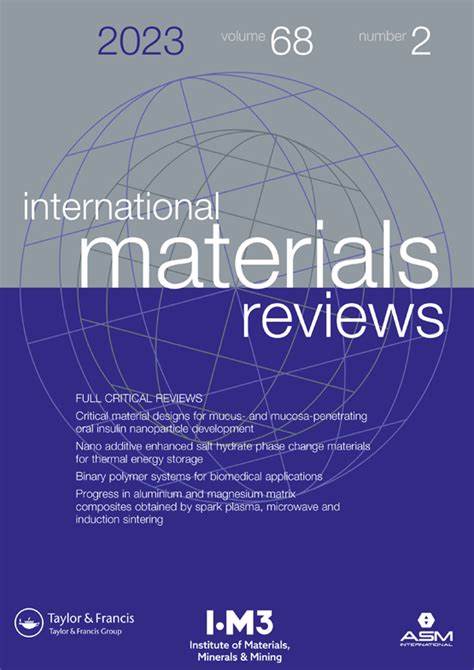生物活性眼镜的模型驱动设计:从分子动力学到机器学习
IF 15.5
1区 材料科学
Q1 MATERIALS SCIENCE, MULTIDISCIPLINARY
引用次数: 26
摘要
生物活性玻璃的研究传统上是通过试错实验进行的。然而,作为正在进行的“解码玻璃基因组”工作的一部分,几种建模技术将加速新BGs的发现在这里,我们批判性地回顾了最近应用分子动力学模拟、机器学习方法和其他建模技术来理解BG的出版物。我们认为,在BGs的设计中应更频繁地使用建模,以实现高生物活性、高断裂强度和韧性、低密度和可控形态等特性。另一个挑战是模拟生物材料的生物反应,例如它们促进蛋白质吸附、细胞粘附、细胞增殖、成骨、血管生成和杀菌作用的能力。开发与强大的计算工具相结合的数据库将是这些努力不可或缺的。因此,设想了未来的挑战,在这些挑战中,计算建模可以大大加快BG的组成设计、合成、表征和应用。本文章由计算机程序翻译,如有差异,请以英文原文为准。
Model-driven design of bioactive glasses: from molecular dynamics through machine learning
ABSTRACT Research in bioactive glasses (BGs) has traditionally been performed through trial-and-error experimentation. However, several modelling techniques will accelerate the discovery of new BGs as part of the ongoing endeavour to ‘decode the glass genome.’ Here, we critically review recent publications applying molecular dynamics simulations, machine learning approaches, and other modelling techniques for understanding BGs. We argue that modelling should be utilised more frequently in the design of BGs to achieve properties such as high bioactivity, high fracture strength and toughness, low density, and controlled morphology. Another challenge is modelling the biological response to biomaterials, such as their ability to foster protein adsorption, cell adhesion, cell proliferation, osteogenesis, angiogenesis, and bactericidal effects. The development of databases integrated with robust computational tools will be indispensable to these efforts. Future challenges are thus envisaged in which the compositional design, synthesis, characterisation, and application of BGs can be greatly accelerated by computational modelling.
求助全文
通过发布文献求助,成功后即可免费获取论文全文。
去求助
来源期刊

International Materials Reviews
工程技术-材料科学:综合
CiteScore
28.50
自引率
0.00%
发文量
21
审稿时长
6 months
期刊介绍:
International Materials Reviews (IMR) is a comprehensive publication that provides in-depth coverage of the current state and advancements in various materials technologies. With contributions from internationally respected experts, IMR offers a thorough analysis of the subject matter. It undergoes rigorous evaluation by committees in the United States and United Kingdom for ensuring the highest quality of content.
Published by Sage on behalf of ASM International and the Institute of Materials, Minerals and Mining (UK), IMR is a valuable resource for professionals in the field. It is available online through Sage's platform, facilitating convenient access to its wealth of information.
Jointly produced by ASM International and the Institute of Materials, Minerals and Mining (UK), IMR focuses on technologies that impact industries dealing with metals, structural ceramics, composite materials, and electronic materials. Its coverage spans from practical applications to theoretical and practical aspects of material extraction, production, fabrication, properties, and behavior.
 求助内容:
求助内容: 应助结果提醒方式:
应助结果提醒方式:


